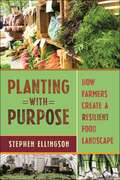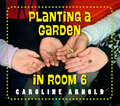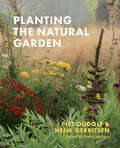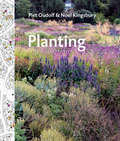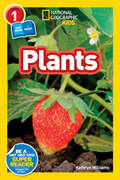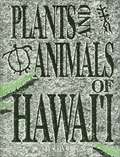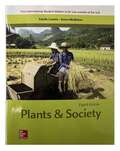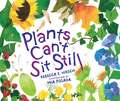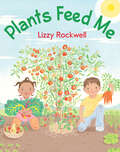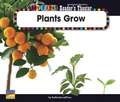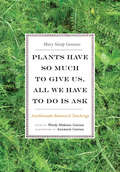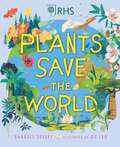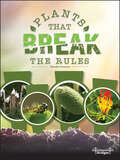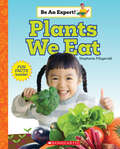- Table View
- List View
Planting With Purpose: How Farmers Create a Resilient Food Landscape
by Stephen EllingsonExamines local food movement activism in a period of increasing climate chaos and neoliberal crisis, economic inequalities and political divisionsIn the face of numerous challenges, small-scale farming for local markets requires enormous courage and optimism. The decision to become a farmer often arises from a profound desire to uphold certain values and beliefs, driven by the moral and emotional motivations to contribute to a greater good.Central New York’s local food market draws a unique cohort of individuals who see farming as more than just a livelihood; it is a way to define a good life and contribute to the well-being of the society they cherish. Their moral order revolves around shared beliefs in sustainability and stewardship of the land, emphasizing health and risk management, cooperation over competition, and a deep sense of justice. For these farmers, relationships and family ties are foundational to their work, creating a strong sense of community within the local food system.This book delves into the captivating world of local food markets in a “Rust Belt” region of the state, where 51 individuals representing 45 different farms, restaurants, agricultural non-profits, and local food retailers share their inspiring stories through conversations and interviews. Author Stephen Ellingson explores the intricate web of moral commitments, self-understandings, and emotional experiences that drive and sustain small-scale farming for the local food market. By amplifying the voices of these unsung heroes, it gives recognition to the crucial role they play in society and offers important insights into the values that underpin their contributions to the local food system.
Planting a Garden in Room 6: From Seeds to Salad (Life Cycles in Room 6)
by Caroline ArnoldKindergarteners learn the joys of gardening in this close-up look at how plants grow.A visit to Mrs. Best's classroom is always inspiring! Follow a classroom of real kindergartners as they grow a garden full of healthy vegetables. Joyful photographs show kids planting seeds, tending the seedlings, and harvesting (and eating!) the results. An exciting introduction to the math and science involved in growing a garden. The Life Cycles in Room 6 series follows Mrs. Best&’s real kindergarten class as they help things grow. This photo-illustrated series engages readers with hands-on science in the classroom and beyond.
Planting a Rainbow (Fountas & Pinnell LLI Blue: Level F)
by Lois EhlertThis educational and enjoyable book helps children understand how to plant bulbs, seeds, and seedlings, and nurture their growth. Lois Ehlert's bold collage illustrations include six pages that present all the flowers of each color of the rainbow.
Planting and Growing (Into Reading, Level E #26)
by Ken O'Donoghue Gail RileyNIMAC-sourced textbook
Planting the Natural Garden
by Piet Oudolf Henk Gerritsen“If the world of gardening has rock stars, Piet Oudolf qualifies as Mick Jagger, David Bowie, and Prince rolled into one.” —Gardenista The original publication of Planting the Natural Garden ushered in a revolution in landscape design: the New Perennial Movement. Spearheaded by internationally renowned designer Piet Oudolf, and incisively articulated by the late plantsman and designer Henk Gerritsen, it transformed private and public spaces with its emotionally resonant, naturalistic use of hardy perennials and grasses. Now this classic has been expanded and updated to include scores of new plants and combinations. Packed with practical information and visual inspiration, Planting the Natural Garden zeroes in on the New Perennial Movement’s power to move us, making its distinctive plant palette available to all. For enthusiasts of these vibrant landscapes, it is an essential text; for gardeners who love the dreamy moods and colors that Oudolf and Gerritsen celebrate, it’s the key to a magic kingdom of garden beauty.
Planting: A New Perspective
by Noel Kingsbury Piet OudolfPlanting: A New Perspective is an essential resource for designers and gardeners looking to create plant-rich, beautiful gardens that support biodiversity and nourish the human spirit. An intimate knowledge of plants is essential to the success of modern landscape design, and Planting makes Oudolf’s considerable understanding of plant ecology and performance accessible, explaining how plants behave in different situations, what goes on underground, and which species make good neighbors. Extensive plant charts and planting plans will help you choose plants for their structure, color, and texture as well as the way they perform in the landscape. A detailed directory with details like each plant’s life expectancy, the persistence of its seedheads, its tendency to spread, and propensity to self-seed, this book is a beautiful and invaluable resource.
Plantology: 30 Activities and Observations for Exploring the World of Plants (Young Naturalists)
by Michael Elsohn RossDID YOU KNOW...Scientists believe that mosses, the first plants, may have changed the Earth's climate from hot to cold by removing carbon dioxide from the atmosphere?Many members of the cabbage family release a poison "mustard" gas to fend off grazers?Plants are used in thousands of industries, from low-cost sewage treatment to new medical cures?Young nature enthusiasts will learn these and other fascinating facts about plants in this colorful, interactive resource. Plantology contains fun, kid-friendly discussions and activities to explore many topics—from seeds, roots, and sprouts to plant skeletons, leaves, petals, and fruits. It then goes beyond the basics to delve into the unknown world of common weeds, fascinating plant defense systems, and the countless roles plants play in our lives. With encouragement to "Try This," "Smell It," and "Look For," kids participate in 30 hands-on activities that promote observation and analysis, writing and drawing, math and science, and nature literacy skills. Children will keep a journal, examine and sketch plant structures, start a seed collection, make tasty vegetarian dishes, and more. Readers from any environment will start to notice the plants around them—not just in parks, gardens, and woods but also surrounding the schools, buildings, and sidewalks of their town, and in their own backyards. Useful resources include a glossary of scientific terms, a list of nature organizations and groups, and a teacher's guide to initiate classroom discussion and investigation.
Plants (National Geographic Kids Readers)
by Kathryn WilliamsAdult and child readers will learn all about plants together in this new Co-reader from National Geographic Kids. Find out how plants grow as well as the different parts of plants, seeds, and flowers.
Plants And Animals Of Hawaii
by Susan ScottThis book about plants and animal of Hawai'i was written to inspire more people to become active in the fight to save Hawai'i native species, many of which teeter on the edge of extinction.
Plants And Society
by Estelle Levetin Karen McMahonThis introductory, one quarter/one-semester text takes a multidisciplinary approach to studying the relationship between plants and people. The authors strive to stimulate interest in plant science and encourage students to further their studies in botany. Also, by exposing students to society's historical connection to plants, Levetin and McMahon hope to instill a greater appreciation for the botanical world. Plants and Society covers basic principles of botany with strong emphasis on the economic aspects and social implications of plants and fungi.
Plants Bite Back!
by Richard PlattAt this level the Readers introduce more complex sentence structures and increased vocabulary. Archive photos and detailed illustrations make the stories exciting for children to read on their own.
Plants Can't Sit Still
by Mia Posada Rebecca E. HirschDo plants really move? Absolutely! You might be surprised by all ways plants can move. Plants might not pick up their roots and walk away, but they definitely don't sit still! Discover the many ways plants (and their seeds) move. Whether it's a sunflower, a Venus flytrap, or an exotic plant like an exploding cucumber, this fascinating picture book shows just how excitingly active plants really are.
Plants Everywhere (Fountas & Pinnell Classroom, Guided Reading Kindergarten)
by Madeline HydeNIMAC-sourced textbook
Plants Feed Me
by Lizzy RockwellSink your teeth into the plants that feed the world—flowers, fruits, seeds, and all! With its simple text and bright, appealing illustrations, this book is perfect for young readers learning about where their food comes from. Clearly-labeled diagrams show the different parts of plants we use and eat—leaves of spinach and cabbage, the roots of carrot plants, and the wide variety of fruits, such as apples, berries, and tomatoes. Plants Feed Me explores the different types of seeds we eat— beans, nuts, rice, and even how wheat is ground into flour and used to make many other types of food. Smiling children pick fruits and vegetables, and learn how plants grow from seeds, stretching toward the sky for sun and into the earth for nutrients. This celebration of fruits, vegetables, and more is sure to get kids interested in what's on their plates!
Plants Feed Me (Into Reading Texas, Read Aloud Module 8 #1)
by Lizzy RockwellNIMAC-sourced textbook
Plants Have So Much to Give Us, All We Have to Do Is Ask: Anishinaabe Botanical Teachings
by Mary Siisip GeniuszMary Siisip Geniusz has spent more than thirty years working with, living with, and using the Anishinaabe teachings, recipes, and botanical information she shares in Plants Have So Much to Give Us, All We Have to Do Is Ask. Geniusz gained much of the knowledge she writes about from her years as an oshkaabewis, a traditionally trained apprentice, and as friend to the late Keewaydinoquay, an Anishinaabe medicine woman from the Leelanau Peninsula in Michigan and a scholar, teacher, and practitioner in the field of native ethnobotany. Keewaydinoquay published little in her lifetime, yet Geniusz has carried on her legacy by making this body of knowledge accessible to a broader audience. Geniusz teaches the ways she was taught—through stories. Sharing the traditional stories she learned at Keewaydinoquay&’s side as well as stories from other American Indian traditions and her own experiences, Geniusz brings the plants to life with narratives that explain their uses, meaning, and history. Stories such as &“Naanabozho and the Squeaky-Voice Plant&” place the plants in cultural context and illustrate the belief in plants as cognizant beings. Covering a wide range of plants, from conifers to cattails to medicinal uses of yarrow, mullein, and dandelion, she explains how we can work with those beings to create food, simple medicines, and practical botanical tools. Plants Have So Much to Give Us, All We Have to Do Is Ask makes this botanical information useful to native and nonnative healers and educators and places it in the context of the Anishinaabe culture that developed the knowledge and practice.
Plants Save the World
by Annabel SaveryProduced in partnership with the RHS, Plants Save the World shows how plants are going to help us to SAVE the world!From tiny seeds and weeds to massive trees, plants come in all different shapes, sizes and colours. They can be found all over the world. In fact, they're so common, we hardly notice them at all. But plants are the foundation of all life on Earth - without them, we cannot survive! They provide food and medicine, clean the air we breathe, provide habitats for animals, protect against disasters, such as flooding, and are used to make products that we use every day. But plants are threatened by humans and so this book shows you how you can help to save them, too!Supports the science curriculum in the study of plant life cycles, plant parts, food chains, ecosystems, deforestation and habitats.In the accompanying book, Bugs Save the World, you can discover why bugs are so important to the survival of our planet, too.
Plants That Break the Rules (Nature's Rule Breakers)
by VizcarraNot all plants behave like plants. Did you know that some plants eat animals, and only sprout only after catching on fire? These plants are some of the weirdest but coolest plants in nature, and they're all inside this kids book about plant behavior. Why are they like this? Be a plant detective and find out in the Plants That Break the Rules Plant Book! Part of the Nature’s Rule Breaker’s Children’s Book Series, this 32-page nonfiction book explores weird but cool plant species that don't follow the rules of nature with fun-filled facts and vibrant photos that will prove just how unique these plants really are!Science Books for Kids Ages 8-12 Features:Comprehension questionsExtension activitySupports NGSS standardsAbout Rourke Educational Media:We proudly publish respectful and relevant nonfiction and fiction titles that represent our diverse readers, and are designed to support reading on a level that has no limits!
Plants That Can Kill: 101 Toxic Species to Make You Think Twice
by Stacy TornioFollowing the success of Plants You Can’t Kill, Tornio now takes a look at those plants that can actually kill you if you’re not careful. This book will offer up information to gardening enthusiasts of all levels about common plants that are toxic, poisonous, and even deadly. While the level of toxicity varies from each plant, all are considered deadly in one way or another to wild animals, family pets, and even humans. With its colorful, easy-to-read format, Plants That Can’t Kill will introduce readers to what these plants look like, smell like, feel like, and sometimes even taste like. Fun facts, interesting tidbits, and history will combine to teach gardeners where these types of plants can be found, how poisonous each one is, and whether these plants are still okay to have in their gardens or if they should be gotten rid of immediately. Plants featured include many common and attractive species you may receive in bouquets or even decorate your homes with, including daffodils, irises, tulips, jasmine, witch hazel, mistletoe, poinsettias, buttercups, marigolds, and even fruits and vegetables like cherries, rhubarb, and some tomatoes.
Plants That Move, Spin, and Snap (Fountas & Pinnell Classroom, Guided Reading)
by Zeke ShepherdNIMAC-sourced textbook. Plants in Action. Plants can't get up and walk away. But that doesn't stop them from moving to get what they need.
Plants We Eat (Be an Expert!)
by Stephanie FitzgeraldKids love to be the experts! Now they can feel like real pros with this exciting nonfiction series for beginning readers. Kids will be hooked on the thrilling real-world topics and big, bright photos. Each book features simple sentences and sight words that children can practice reading. Then, with support, kids can dig deeper into the extra facts, Q&As, and fun challenges.Fans of this series will be eager to become real experts!Sometimes we eat the leaves of a plant. Sometimes we eat the roots. These foods from plants are all good for us! What do you know about the fruits and vegetables that come from plants? With this book you can become an expert!
Plants We Use (Into Reading, Level K #89)
by Lisa ShulmanWe use plants to make books, clothing, and other things. Find out how we use different parts of plants to make the things we need.
Plants and Animals in Different Seasons
by Tara Funk Kira FreedLearn how plants and animals change in different seasons.
